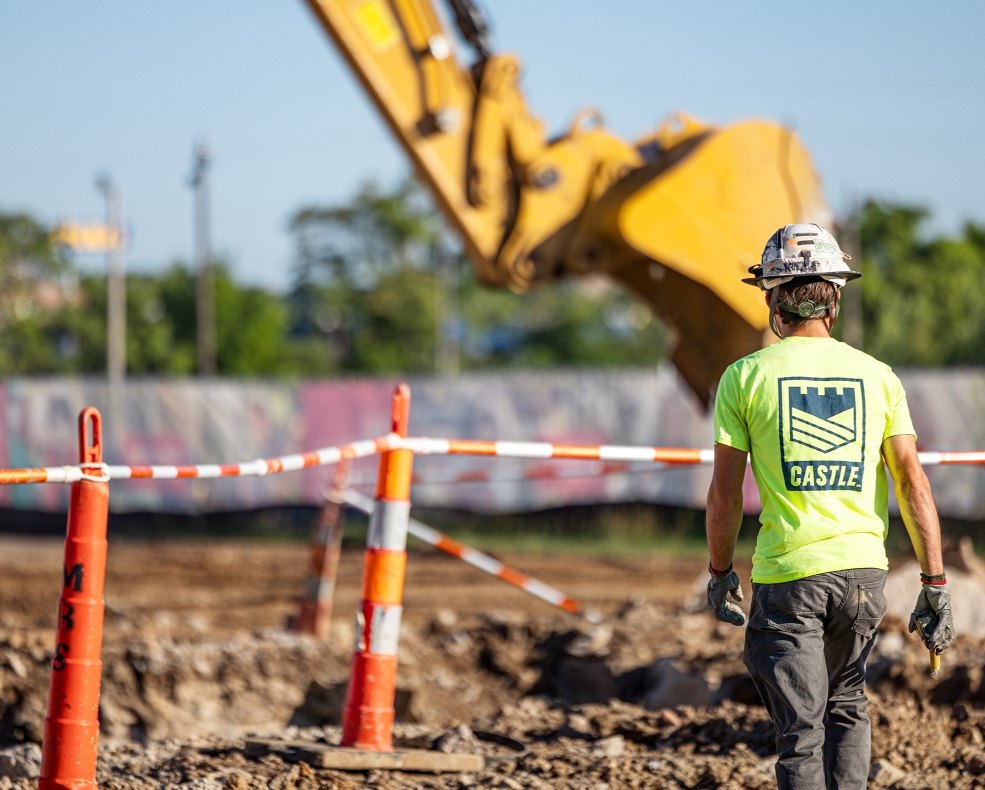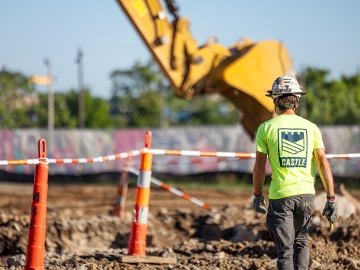Drones in Construction: Aerial Technology Takes Off
Drone technology has provided the construction industry with several solutions to some of its most vexing challenges.


Drone technology has provided the construction industry with several solutions to some of its most vexing challenges. Drones improve productivity and safety and provide real-time information that helps project managers make informed decisions.
Drone Surveying for Construction Companies
Surveying with drones improves project outcomes in different ways based on the location of the jobsite and the type of structure under construction. The core benefits of using drones in construction can be categorized into four main pillars.
Site safety – Despite industry-wide commitments and ongoing training, construction sites are inherently hazardous. Drones improve jobsite safety by providing aerial footage of the entire jobsite in just a few minutes, reducing the need to put workers in dangerous positions. Footage can be viewed in real-time or recorded for later analysis.
The safety benefits of drones shouldn’t be discounted. Falls account for 34% of fatalities in the construction industry, meaning that every time we keep a worker on the ground, we keep a team member safe.
More data –Drone photogrammetry uses multiple images overlaid to measure the distances between and dimensions of any number of jobsite elements. In a single flight, a drone can generate an expansive map that provides accurate distances, elevations and volumes of the construction site. It is a great tool for preliminary information for early conceptual design and for production tracking. It should be noted that drone footage is not considered an official survey and is not a legal survey document. There are nuances such as ground cover or debris that need to be assessed from the ground that can’t be captured with an aerial view.
Project efficiency – Experienced drone operators can survey more area faster than traditional surveyors, which lowers costs. There is another advantage; drones are ready to fly in minutes, providing almost immediate feedback to decision-makers regarding progress and production that help them maintain schedule and even accelerate project delivery.
A Bright Spot in Construction Productivity
Productivity is a critical measurement of industry growth and improvement. Companies in other industries invest billions of dollars every year to make incremental improvements in employee and organizational productivity to lower costs and deliver goods and services more efficiently.
Our industry is falling behind. In the past two decades, the global construction industry’s productivity has improved by 1%. Total U.S. worker productivity has increased by 1% per year since 2005 – 1.1% slower than the long-term historical average. Drone technology is one of the most impactful ways we’re accelerating productivity in construction and could encourage further adoption of tech-focused solutions.
How to Become a Drone Surveyor in Construction
Drone training programs are available through private programs located across the country. In addition, an increasing number of vocational schools, community colleges and universities are now offering drone training as a part of their geology, engineering and construction management programs.
Qualification includes earning a Remote Pilot Certificate through the Federal Aviation Administration. The FAA offers several resources to find the training and education you need to get started.
Drone use in construction will only accelerate in the years ahead due to the cost efficiencies and severe labor shortages hampering the industry.
Let Your Construction Career Take Flight
The construction industry is full of exciting career opportunities, from drone operators to project managers to roles that don’t even exist yet. At Castle Contracting, we’re committed to supporting professional development and continuing education. Explore open positions today, or contact the Castle office nearest you to learn more.






